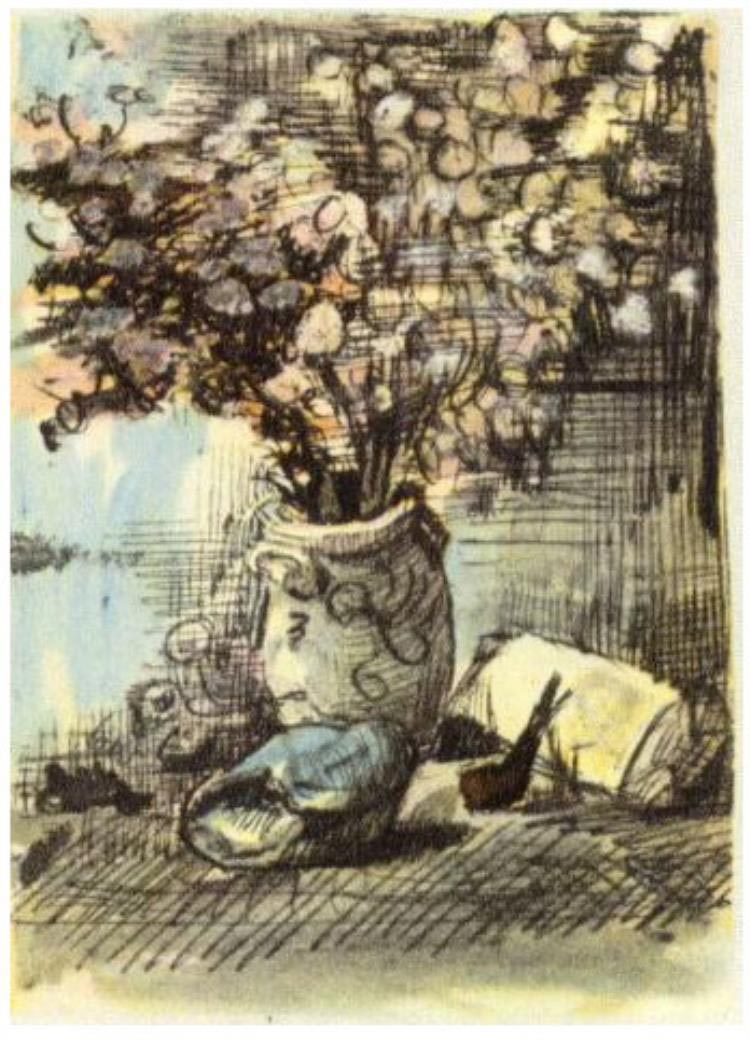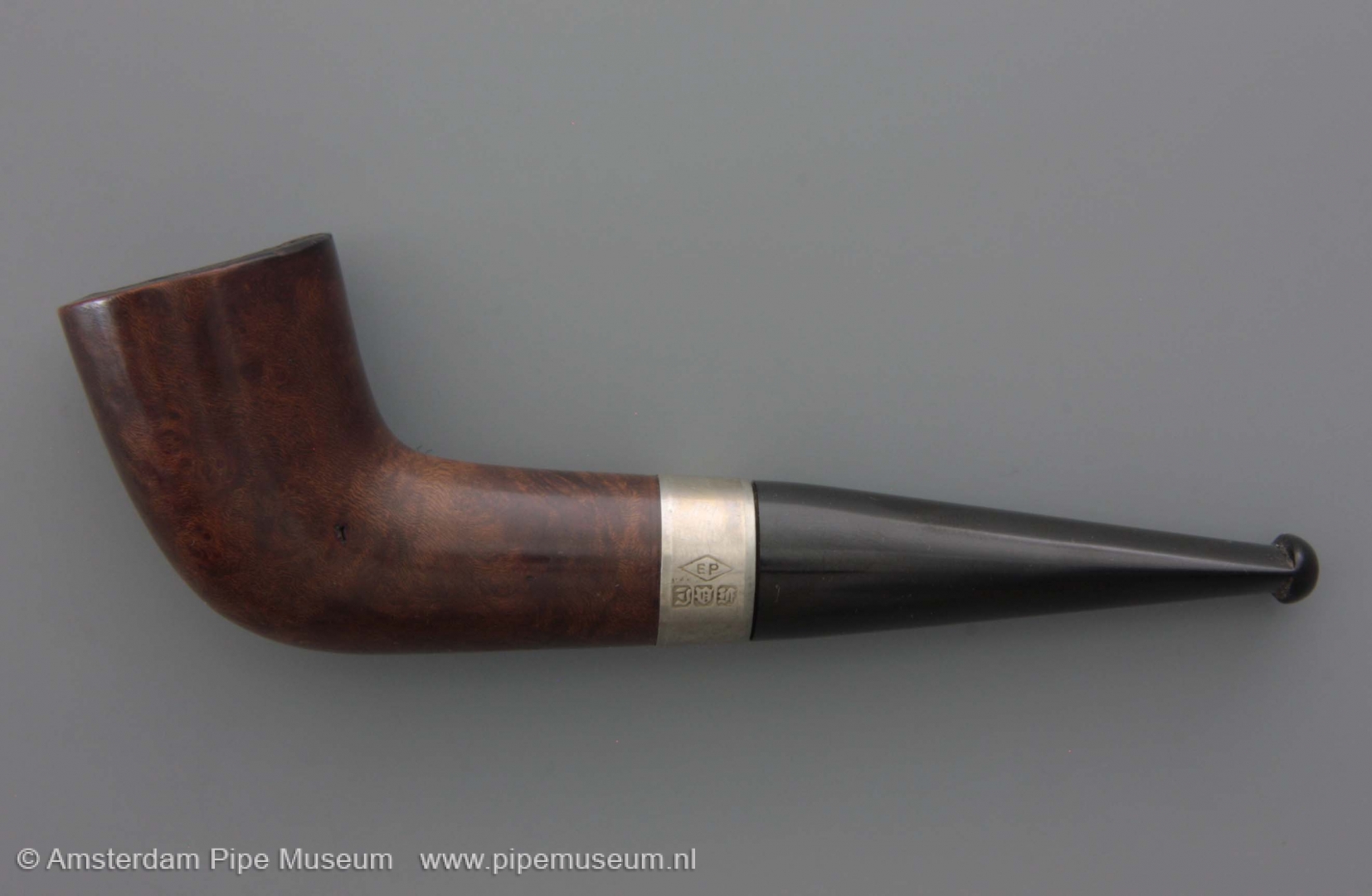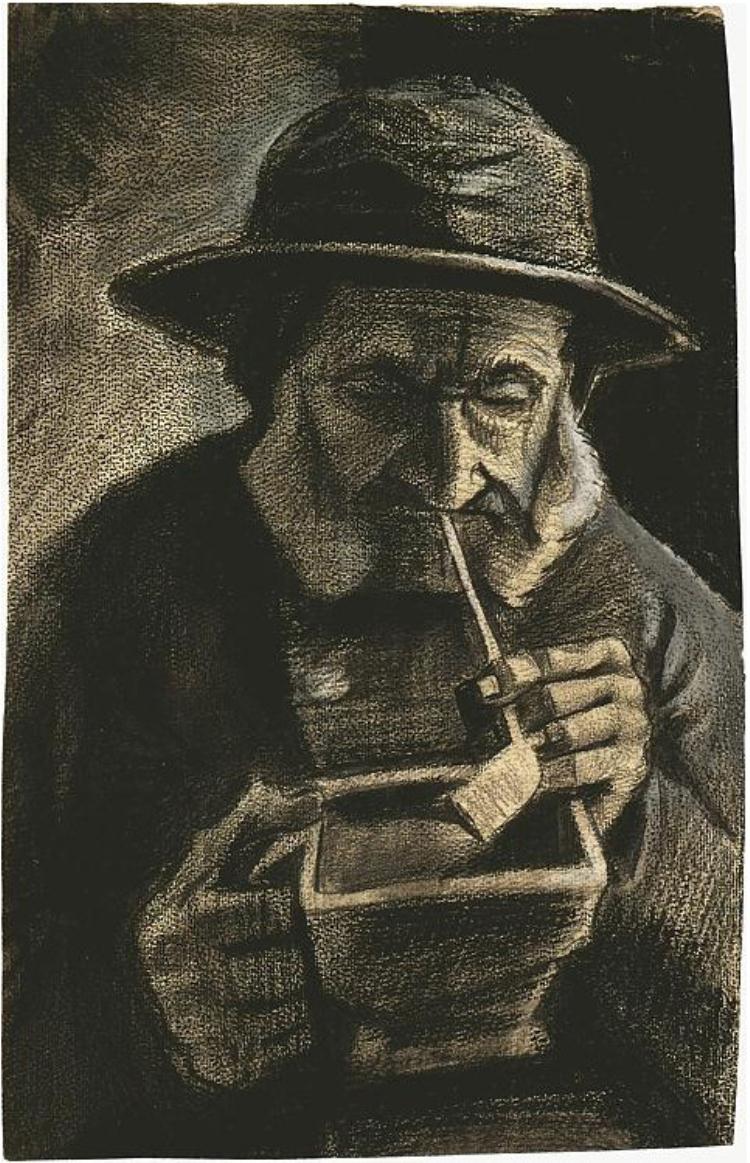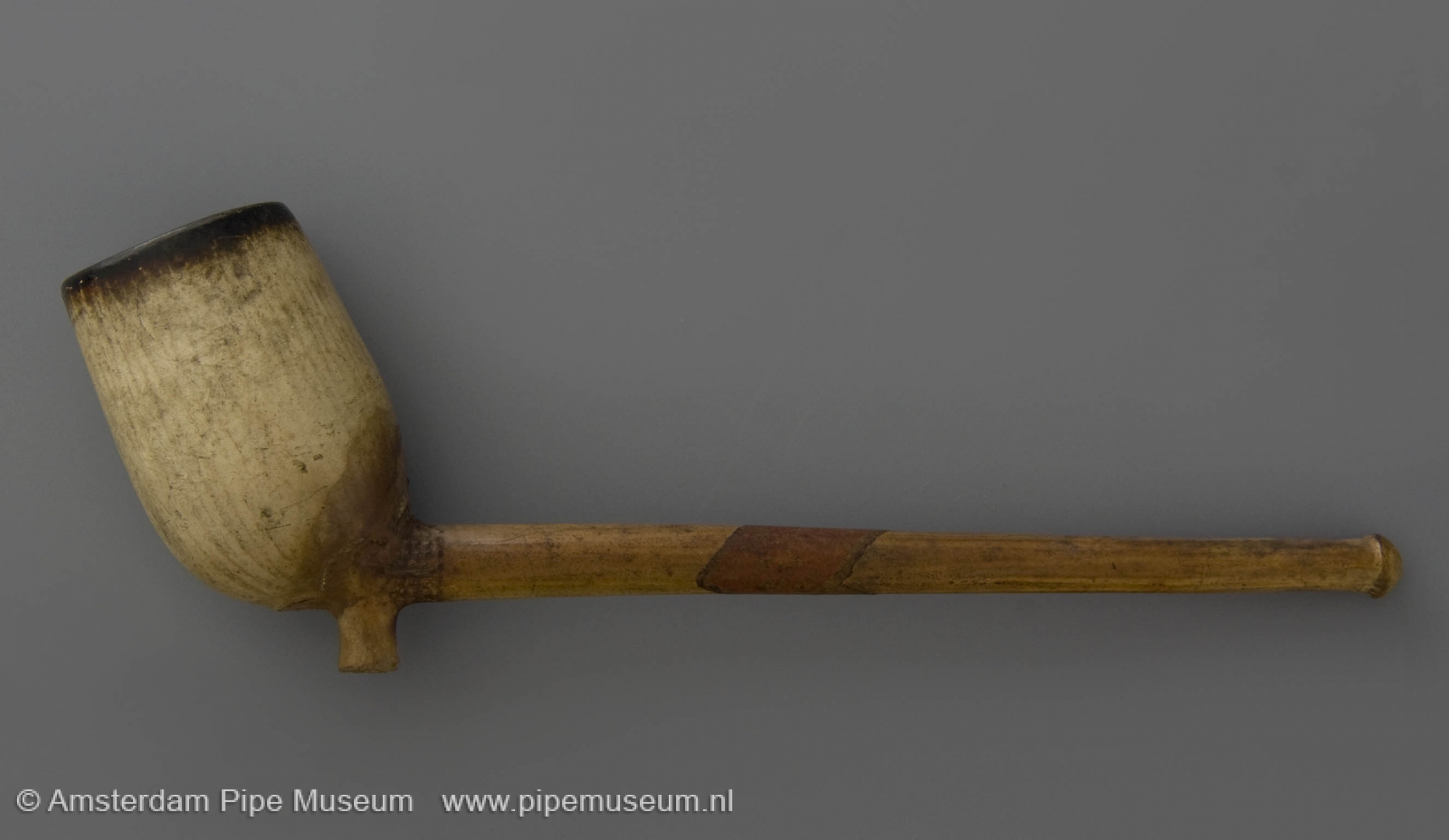Vincents passion for pipe smoking
Author:
Benedict Goes
Original Title:
Vincents passie voor pijproken
Publication Year:
2015
Publisher:
Amsterdam Pipe Museum (Stichting Pijpenkabinet)
Pipe smoking in Vincent's early years
Pipe smoking was as common as it was widespread in centuries past. Practically everyone smoked. That is not surprising, because smoking dispels a feeling of slumbering hunger, gives a pleasant taste and above that gives energy. The Dutch were particularly strong smokers. Their favourite smoking instrument for three hundred years was the clay pipe, often referred to as Gouda pipe. It is the well-known white pipe with a long or shorter stem (Fig. 2). In the time of Vincent van Gogh, the second half of the nineteenth century, that clay pipe was still as popular as ever. The rich smoked from pipes with the longest stems, the common man used, for economy reasons, a nose warmer with a short, often broken off stem.

It is not surprising that the young Vincent van Gogh started smoking as most boys. It was said to be at the age of fifteen, certainly not exceptional for that time. Like so many rural people, he too would have started with a simple clay pipe, bought for a few cents, or perhaps as a gift from a friend, perhaps from his father who was also a dedicated pipe smoker.
Vincent was born in 1853, but it would take nearly thirty years before he started drawing regularly, and consequently we get to know him better through his art. Fortunately, he reports his passion for smoking in one of his first letters from The Hague to his brother Theo (letter 5, 1872), just at the end in a PS. He is barely twenty years old and already enjoys pipe smoking:
Theo I have to recommend you to smoke pipes, which is so good if you ever feel miserable.
Apparently he finds an uplifting pleasure in his pipe. The question is what kind of pipes he used then. Given the time, in the 1870s and its young age, it must be a simple clay pipe. In that period there were enough alternatives to smoke, such as cigars and even the cigarette that came up at the time. That custom was hardly common in the Netherlands and certainly not in his circles in Brabant.
Learned from father?
As in every family, Vincent's father was also a smoker. Although Vincent did not have a very good relationship with his father, he sometimes mentions his father in his letters. From a letter of January 1882:
Dad is horribly touchy and irritable and full of quirkiness in domestic life and is used to get his way.
Fortunately, Vincent knows how to deal with his father at a later age. Then the father fulfils the role of house man, inseparable from his tobacco pipe.
When he is told something he don't know what to answer Dad's regular reaction is a saying such as, "You kill me”, while he sits calmly reading the newspaper and smokes his pipe. So I take such expressions for what they are.


In any case, Vincent did not copy pipe smoking from a stranger. In 1885, Vincent drew his father's pipe on a still life with a vase of Juda tokens (Fig. 3). That pipe has a specific shape and we can easily be recognized as a wooden pipe with a wonderful trunk-shape, popular from the 1880s (Fig. 4). He himself is very satisfied with his drawing in pastel colours, as is evident from his letter to Theo (letter 490, April 1885):
Here is a scribble of a still life with Judas tokens in the same style as what you take with you. However, it is somewhat larger - and the objects in the foreground are a tobacco pouch and a pipe from dad. If you want to have it, you can of course get it.


A painted still life that Vincent made in his birthplace Nuenen in November 1884 shows a now old-fashioned coffee grinder, a so-called bellarmine jug with a kind of pipe in the foreground (Fig. 5). On closer inspection, this pipe turns out not to be a tobacco pipe, but a pipe case, a wooden pipe holder (Fig. 6) for carrying a short clay pipe, safely stored without the risk of breaking. Pipe cases have been common Dutch utensils since the early eighteenth century, although they had become old-fashioned by the late nineteenth century. Such an object was apparently still in use by thrifty Brabant farmers.


Another old-fashioned, but practical attribute for the pipe smoker is the brazier, in Dutch vuurtest. Usually these are simple square top bowls made from red-fired pottery. Glowing coals from the kitchen were put in the brazier to light your pipe elsewhere. In 1883, Van Gogh makes a drawing of a fisherman with a south-western demonstrating this use (Fig. 7). He smokes from a clay pipe with a large curved bowl and a stem of less than fifteen centimetres (Fig. 8). The heel on which the pipe maker stamped his mark is clearly visible between the bowl and the stem.